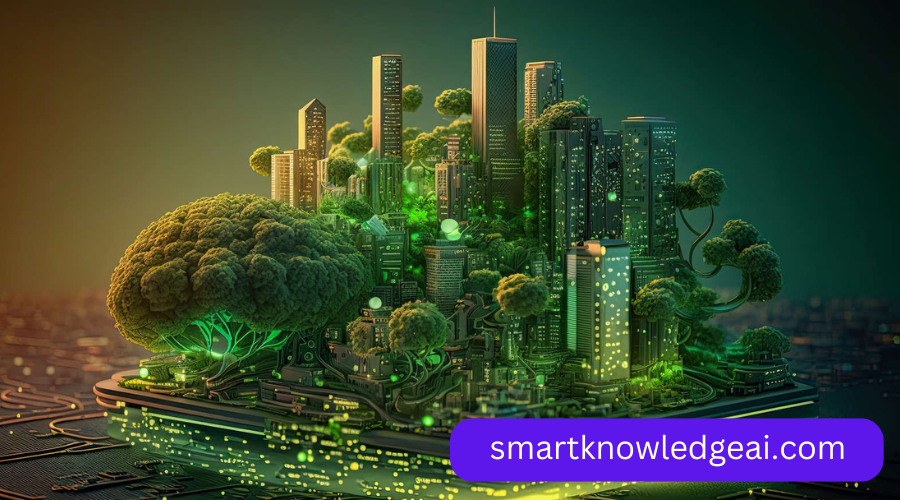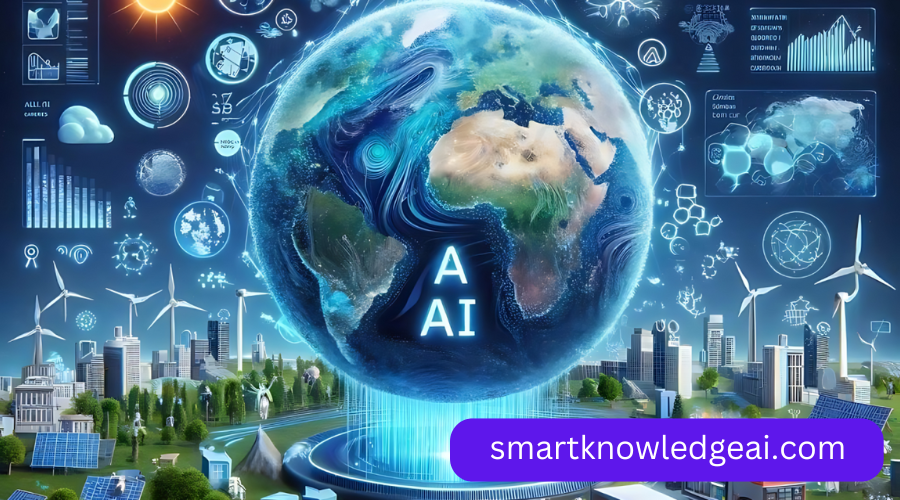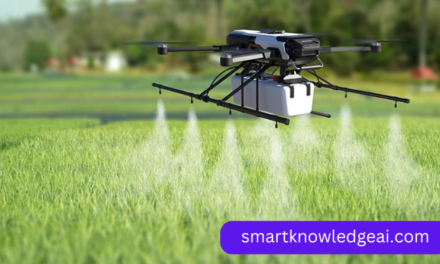As the world grapples with the impacts of climate change, innovative solutions are required to mitigate environmental damage and promote sustainable practices. Artificial Intelligence (AI) is emerging as a powerful tool in the fight against climate change, helping to monitor, predict, and reduce human impacts on the environment. This blog explores the applications of AI and climate change, the benefits it offers, challenges it faces, and the future possibilities it holds.
How AI is Being Used to Combat Climate Change
- Predictive Climate Modeling: AI is used to enhance climate models by analyzing vast amounts of historical weather and climate data. Machine learning algorithms can identify complex patterns and improve the accuracy of climate projections. This helps scientists understand potential future scenarios and supports governments in making informed policy decisions.
- Energy Optimization: AI technologies are deployed to optimize energy consumption in various sectors. Smart grids, powered by AI, adjust energy distribution based on demand and predict future needs to reduce wastage. Additionally, AI helps in managing renewable energy sources such as solar and wind, which are variable by nature, by predicting their output more accurately.
- Carbon Footprint Reduction: Companies are increasingly using AI to monitor and reduce their carbon emissions. AI algorithms can analyze production processes, identify inefficiencies, and suggest alternative methods that emit fewer greenhouse gases. These tools also track carbon footprints in real-time, enabling organizations to act swiftly to lower emissions.
- Precision Agriculture: Agriculture contributes significantly to greenhouse gas emissions. AI-driven precision farming techniques help farmers reduce their environmental impact by optimizing the use of water, fertilizers, and pesticides. This not only boosts crop yields but also minimizes harmful runoff and decreases the carbon footprint associated with traditional farming practices.
- Deforestation Monitoring: Deforestation is a major contributor to climate change, and AI is instrumental in monitoring and preventing it. Satellite imagery analyzed by AI can detect deforestation activities in real-time, enabling authorities to take action more quickly. AI can distinguish between natural and human-induced changes in forests, making it easier to target conservation efforts.
- Waste Management and Recycling: AI is improving waste management by automating sorting processes and enhancing recycling efficiency. Image recognition technology can identify different types of waste and separate recyclables from non-recyclables. This technology reduces contamination in recycling streams and helps maximize the amount of material that can be reused.

Benefits of Using AI for Climate Change Solutions
- Enhanced Data Analysis: AI can process and analyze vast amounts of data much faster than humans, making it an invaluable asset for climate research. This capability enables more precise climate models, which in turn supports more effective policy-making and international cooperation.
- Increased Efficiency: From energy grids to agriculture, AI helps optimize processes, leading to reduced resource consumption and waste. These efficiencies contribute to sustainability by minimizing environmental impact.
- Better Decision-Making: Governments and businesses can use AI insights to make informed decisions about climate action. AI models can highlight which policies or changes will have the greatest impact, allowing for strategic planning and investment.
- Proactive Risk Management: AI-driven predictive models allow for proactive management of natural disasters like hurricanes, floods, and wildfires, which are becoming more frequent due to climate change. This technology can save lives and reduce economic damage by providing early warnings and suggesting evacuation routes or emergency measures.
Challenges of Implementing AI for Climate Change
- Data Limitations: AI’s effectiveness depends on the quality and quantity of data. Incomplete or biased datasets can result in inaccurate predictions and analyses. Ensuring access to high-quality data is a significant challenge that must be addressed for AI to be fully effective in combating climate change.
- High Energy Consumption: Ironically, training AI models can be energy-intensive, contributing to carbon emissions. Developing more energy-efficient algorithms and using renewable energy sources for data centers is crucial to mitigating this issue.
- Economic Barriers: The development and implementation of AI technologies can be expensive, creating a divide between wealthier nations that can afford these innovations and poorer nations that cannot. Bridging this gap is essential for equitable global progress on climate action.
- Ethical Concerns: The use of AI in climate change must be managed to ensure ethical practices. This includes data privacy, fairness, and transparency in decision-making processes. Policies need to be in place to regulate the use of AI and prevent potential misuse.
Future Possibilities; AI and Climate Change
- Integration with IoT for Real-Time Monitoring: The combination of AI and the Internet of Things (IoT) can revolutionize climate monitoring. Sensors placed in forests, oceans, and cities can collect real-time data, which AI can process to provide actionable insights. This integration would enable more responsive and adaptive strategies for climate management.
- AI-Powered Climate Mitigation Tools: Future AI technologies could include tools designed to manage carbon capture and storage systems more effectively. These AI systems would optimize the process, making carbon capture a more feasible solution for large-scale implementation.
- Global Collaboration Platforms: AI can facilitate collaboration between nations by providing platforms for sharing climate data and research. Such platforms could help standardize efforts and improve the coordination of international climate initiatives, leading to more unified and effective global action.
- AI-Driven Innovations in Renewable Energy: Advancements in AI could lead to the development of smarter renewable energy technologies. For instance, AI could improve the design of solar panels or optimize wind turbine placement to harness energy more efficiently.
To Sum Up
AI holds the potential to be a transformative force in the fight against climate change, providing powerful tools to enhance sustainability and resilience. While there are challenges to its implementation, the benefits far outweigh the risks when managed carefully. The future of AI in climate action promises innovative solutions that can help us create a more sustainable, eco-friendly world. Embracing these technologies and addressing their challenges will be key to building a resilient and sustainable future.










